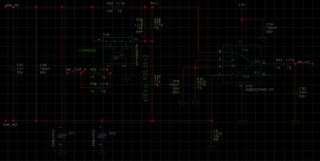Hello
I need to identify what is the best cross reference replacement for the AD8203 used to realize a 10V differential analog input (the input become 4-20mA when U18 is activated)

P2P is not important but we need of a cost reduction
We have already evaluated INA270 and INA190, these device has good characteristics but the gain is to hight.
Could you suggest to me an instrumention amplifier with same charactheristics but with max gain 4V/V
Thank you
Mauro

